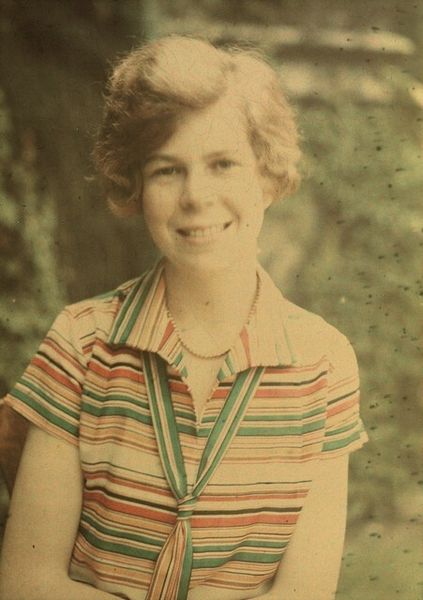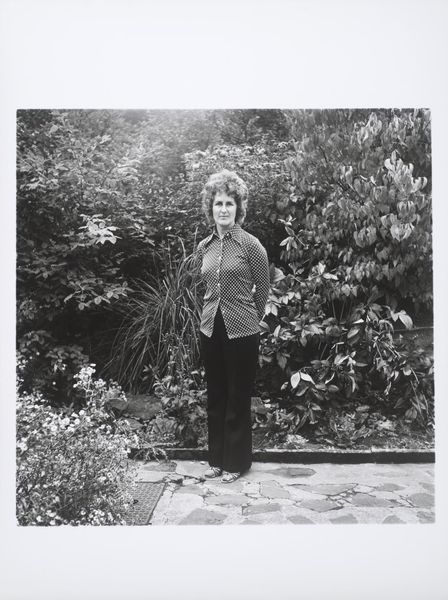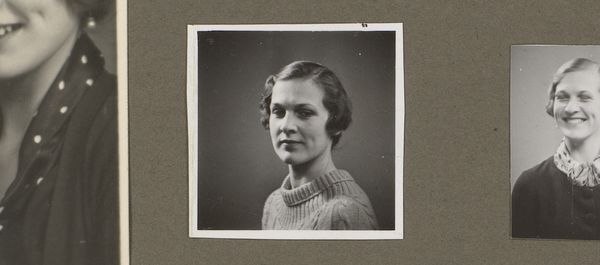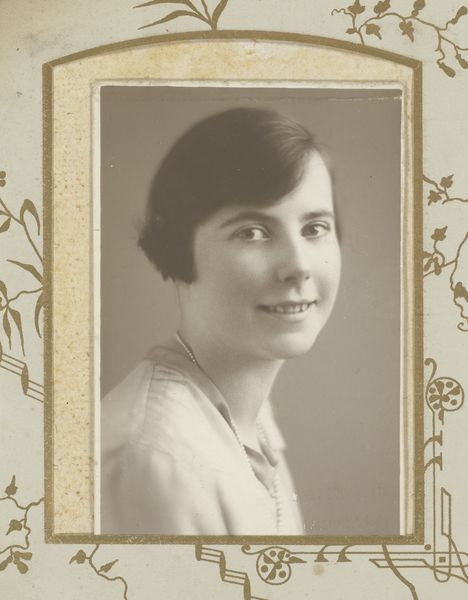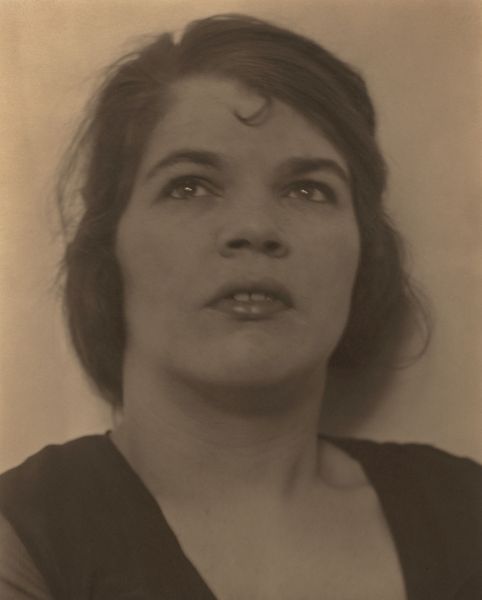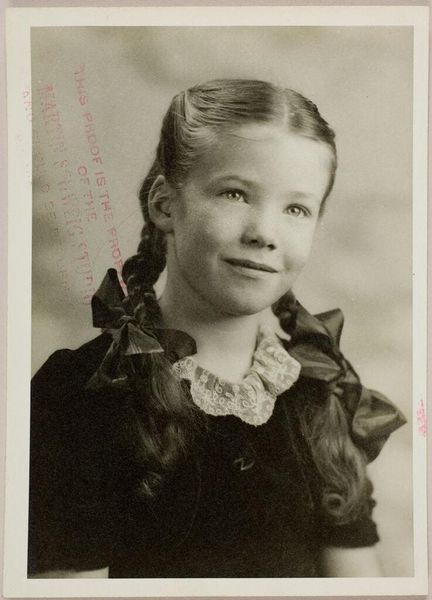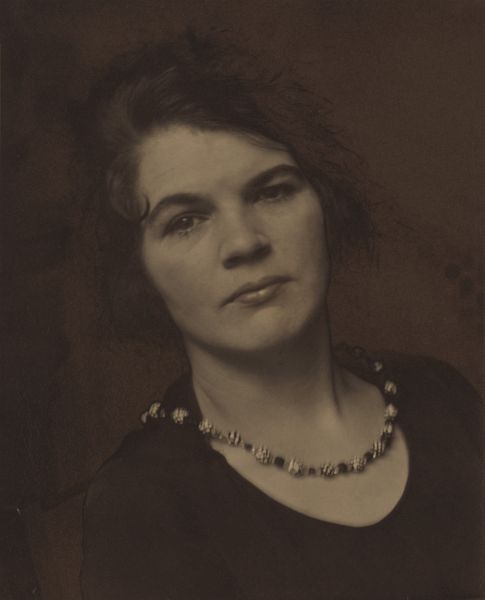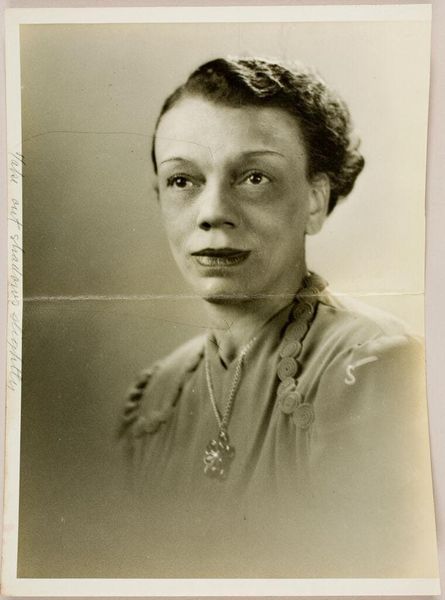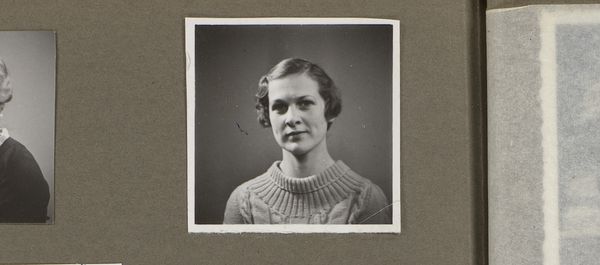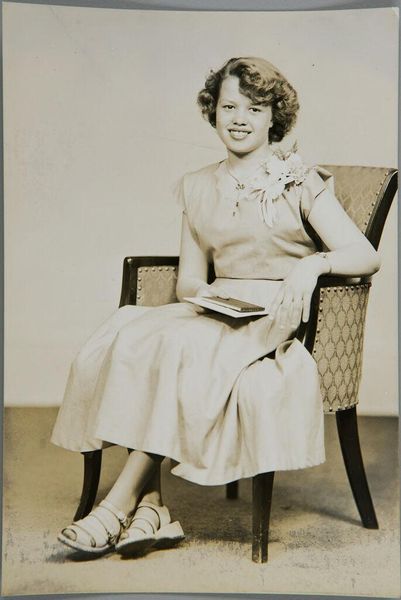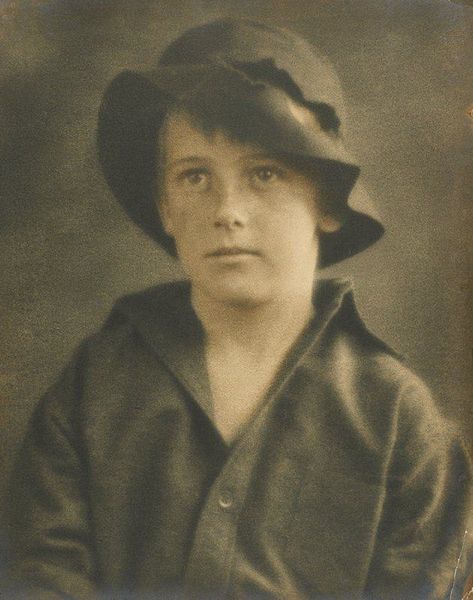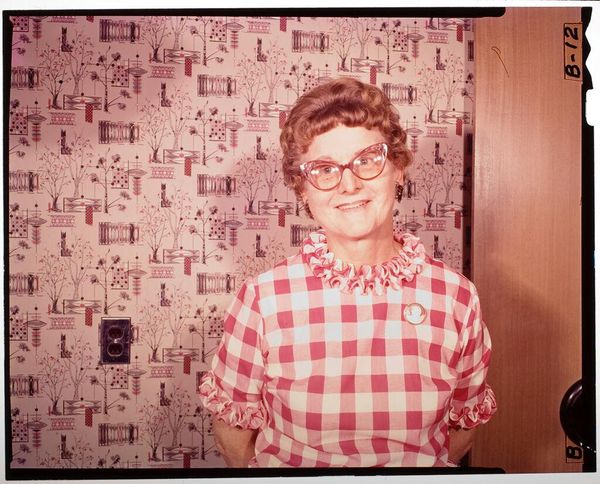
photography, gelatin-silver-print
#
portrait
#
self-portrait
#
pictorialism
#
photography
#
gelatin-silver-print
#
modernism
#
monochrome
Dimensions: image: 10.7 × 7.8 cm (4 3/16 × 3 1/16 in.) overall: 12.1 × 9 cm (4 3/4 × 3 9/16 in.)
Copyright: National Gallery of Art: CC0 1.0
Editor: This gelatin-silver print, titled "Georgia Engelhard," was created around 1922 by Alfred Stieglitz. I am struck by the strong contrast and shallow depth of field. What draws your eye in this portrait? Curator: The interplay between the geometric and the organic is quite striking. Note how the sharply defined stripes of the sitter's garment create a planar surface, boldly contrasting the soft, out-of-focus foliage in the background. Consider also the subject’s soft hairstyle that juxtaposes her direct gaze. Editor: I see what you mean. So the tension comes from those contrasting forms? Curator: Precisely. The strength of the work resides in how Stieglitz manipulates tone and texture to generate that tension. Examine how the light caresses the planes of her face, delineating form with subtle gradations. It’s a delicate balance between clarity and abstraction. How does this distribution of light inform the composition as a whole? Editor: Well, it makes her face the clear focal point, directing your eye there first, even against the busy shirt. Is that contrast meant to communicate something specific about her, perhaps? Curator: One might consider how these formal devices, seemingly devoid of direct symbolism, instead construct a certain visual presence for the sitter. What impression does that create, independent of external references? Editor: That the form itself carries meaning. It makes you really consider the pure structure of the photograph and how that shapes the viewer’s understanding. I had not considered it from this perspective before. Curator: Indeed. Focusing on these fundamental formal aspects provides a deeper, potentially more nuanced understanding of the artwork.
Comments
No comments
Be the first to comment and join the conversation on the ultimate creative platform.
